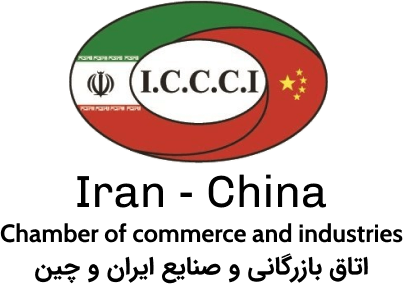South Khorasan Province (Persian: استان خراسان جنوبی Ostān-e Khorāsān-e Jonūbī ) is a province located in eastern Iran. Birjand is the centre of the province. The other major cities are Ferdows and Qaen.
This new province, is but the old Qohistan which was included into greater Khorasan in the Iranian administrative planning. However, historically Qohistan forms a separate entity, with a distinct culture, history, environment and ecology. While at the beginning in 2006, the newly created “South Khorasan” included nearly the entire historic Qohistan, in the past 5 years, all northern cities and territories of the province have been transferred into the Razavi Khorasan.
South Khorasan Province consists of 8 counties: Birjand, Boshruyeh, Ferdows, Qaen, Sarayan, Nehbandan, Darmian and Sarbisheh.
South Khorasan is one the three provinces that were created after the division of Khorasan in 2004.
Demographics
The major ethnic groups in this region are the Persians there are also large Pashtuns, Baloch, and Arab communities. There is also a sizeable Afghan (pashtuns) community, especially in the eastern parts of the province (Birjand and Qaen), due to the influx of immigrants coming from Afghanistan in recent years.
South Khorasan is known for its famous rugs as well as its saffron, barberry which are produced in almost all parts of the province.
Economic
Agricultural Sector:
Province of Khorasan South enjoys a semi-desert and semi-moderate climatic condition has dried weather with average rainfall of 50-250 mm.
A comprised of approx. 200 wells, 3700 aqueducts, 1261 springs, water resources of this province are supplied from rivers of Afin, Qayen, Shakhen, Fakhroud and seasonal rivers of Siyahkouh, Mahiroud, Hajiabad, Shahabad and Alang.
With more than 780 thousand ha agricultural land, this province is considered as one of regions with agricultural economy approach in the country. The most important agricultural products of this province are: wheat, barley, cotton, sugar beet,cereals,etc. Moreover, horticultural products of this province include are: barberry, saffron, jujube,pistachio, almond, apple, pear, pomegranate, walnut and grape.

Amongst agricultural products of this province, barberry and saffron stand on the first and second ranking in the country.
Industry and mining
A: industry
Industry aggregation of south khorasan is so low than other province where just 73 workshop (ten or more employee) including ./45 percent of total workshop of Iran ( consist 16057 workshop ) and ./39 percent of total employees of this workshops which had more than 50 employees from those 73workshops. About 4198 persons was working in those workshops ( ten or more employee) where 31 percent of them manufacture food and beverage and 29 of them produce plastic and rubber product . 66percent of workshops (48 workshops ) and 64 percent of their employees were existed in Birjand that show inappropriate distribution of industry.
B:mine
South khorassan with 95388 km2 extent contain various kind of igneous , sedimentary , transformation rock from different century’s which created mountains and therefore numerous mineral mines .There are outstanding kinds of valuable minerals ( mental , nonmetals and decorative stones ) in every part of province which result to 207 establishment license and about 90 detection license .
Furthermore , some detection projects led to several mineral resources like iron , cooper which provide opportunity’s for new investment in mining and mine industry of province . It’s obvious that geological structure of province display considerable potential of south khorassan . Base on discovery pattern especially in igneous and sedimentary resources .
According to the last data , there are 207 mine under exploitations with 2392 employment .Definitive reserves of this mines were estimated 467 million ton. Some mineral of province include decorative stone , magnesia , betonite , chromite, copper , iron . etc. In summery current mines of province classify in following table according to attribute grading .
Attractions
South Khorasan has many historical and natural attractions, but besides these, South Khorasan encompasses various religious buildings and places of pilgrimage as well.
The Cultural Heritage of Iran lists 1179 sites of historical and cultural significance in all three provinces of Khorasan.
In the past, Birjand was a small part of a region which called Ghohestan. Ghohestan, was a part of old Khorasan which now is named South Khorasan Province. The main cities of Ghohestan, were Toon (now Ferdows) and Qaen. Birjand grew in recent centuries especially during Qajar dynasty and found its important role in this region.
On the one hand, this region was a place of refuge for some movements like the Ismaili, and was the target of Arab refugees who escaped from the tyranny of the Abbasid Caliphate. On the other hand, some Zoroastrian vestiges have exist in the area.
Some of the popular attractions of South Khorasan are:
• Ferdows Hot Mineral Spring
• Ferdows Congregation Mosque or Jame’ mosque of Ferdows
• Ferdows Religious School
• Nehbandan citadel
• Furg citadel
• Ferdows Religious School (Belonged to Safavid dynasty)
• Kolah Farangi mansion in Birjand
• Ghal’eh Paeen-Shahr
• Chahr Derakht Mosque
• Amir Abad garden
• Behgard Garden
• Akbariyeh Garden
• Chenshat cave,
• Jame’ mosque of Birjand
• Imamzadeh Mosa,
• Alam palace
• deragon cave in Sarayan
• ghaleh ghala castle of Sarayan
Resources:
http://www.en.investin-sk.ir/index.php?obj=Page&task=Show&code=1
www.iran.farsfoundation.net/en/zanjan.html
